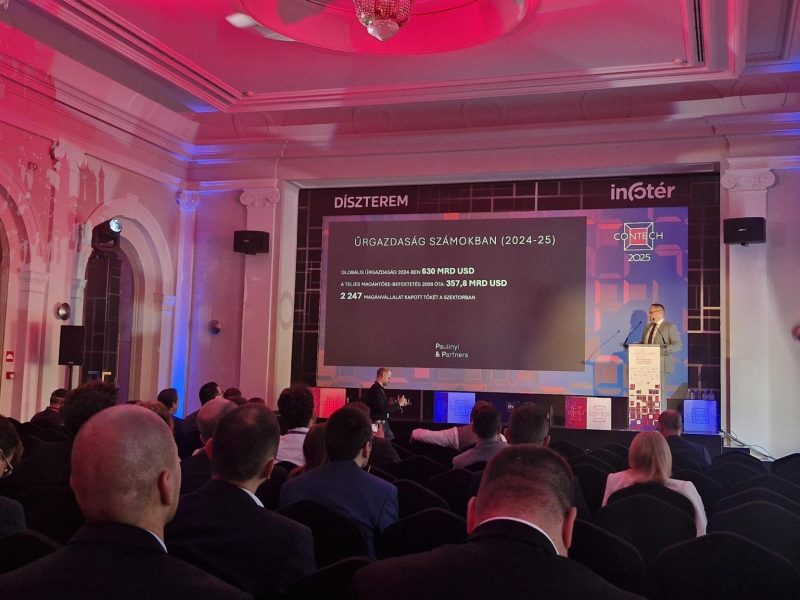"Reaching where no one has dared to go before." Dr. Gergely Paulinyi, CEO of Paulinyi&Partners, delivered a presentation at the INFOTÉR ConTech 2025 conference about the connection between architecture and the space industry. In his presentation, he also demonstrated how the construction industry can revolutionize itself using technologies from space research - and by extension, contribute to a sustainable future.
"The greenest energy is the one we don’t consume."
The construction industry is responsible for 32% of global energy consumption and a similar proportion of carbon emissions — while 68% of the world's population already lives in cities. The challenge is clear: we need to reduce our ecological footprint while maintaining economic interests.
At Paulinyi & Partners, we believe that the key to adaptation lies in extreme efficiency, developing energy circulation and resilience - all made possible through technological innovation.
Space technology is no longer just for research; it’s now also a tool for city development. With our HeatScape Resolve system, satellite Earth observation data is used to map urban heat islands and reduce heat stress.
In collaboration with Space4Cities, we support city governments and real estate developers through Urban Energy Scan, enabling data-driven decisions that promote energy efficiency. Our Easy Invest investment optimization solution helps developers forecast financial outcomes, operators analyze energy consumption profiles and risks, and municipalities improve livability and public well-being. For modernizing existing buildings, our Energy Quick Scan service can run hundreds of energy efficiency scenarios in just three weeks—an example of real, data-driven decision-making.
But the future extends beyond Earth, told Dr. Paulinyi Gergely to the audience at the conference. Asteroid mining, lunar bases, and space colonization are now within tangible reach. Paulinyi & Partners’ Lunadome lunar base concept is among the most exciting architectural visions of the New Space Age. The technologies developed for this project - such as local material use, closed self-sustaining systems, and adaptation to extreme environments - could not only open a new chapter in sustainable city-building on the Moon but also benefit Earth.
Just as we aim to create self-sustaining ecosystems on the Moon, our goal on Earth is to develop intelligent, sustainable, data-driven built environments.
“We, architects, need to think 10 years ahead, and set the pace 10 years in advance,” concluded Dr. Gergely Paulinyi. He believes that by combining space technologies, data, and architecture, architects will be able to work for the civilization of the future.
